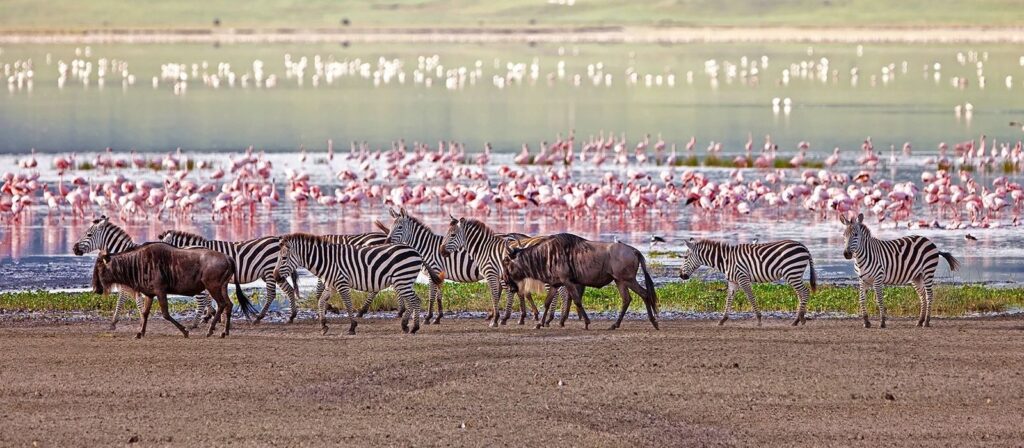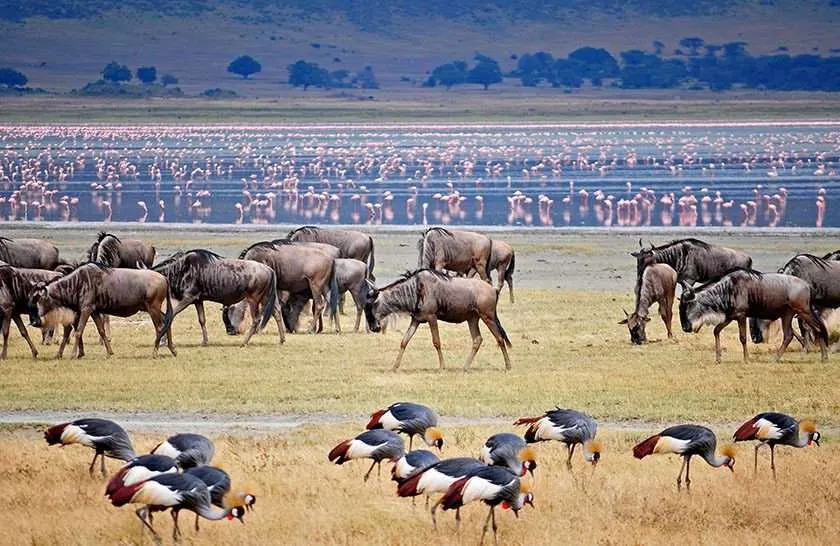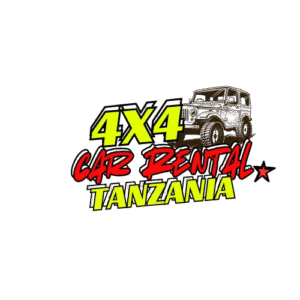Best self drive guide to Lake Manyara National Park
Lake Manyara National Park is an exceptional tourist destination located in the Arusha and Manyara regions, near Arusha town. It is part of the greater Lake Manyara Biosphere Reserve and encompasses an area of 325 square kilometers, situated at the base of the Rift Valley escarpment, with an altitude ranging from 3,130 to 6,742 feet. The majority of Lake Manyara National Park consists of a short strip situated between the Gregory Rift wall to the west and Lake Manyara to the east.

History of Lake Manyara National Park
The region encompassing Manyara National Park was formerly designated for sport hunting. Due to the many wildlife species inhabiting the area, it was created as a game reserve in 1957 and subsequently elevated to national park status in 1960. Initially, Manyara National Park encompassed a smaller area, as land was progressively incorporated to expand its size; in 1974, an additional 1,400 acres were integrated into the park’s territory. The park was designated a UNESCO site due to its exceptional ecological preservation.
Attractions in Lake Manyara National Park
Wildlife
Wildlife constitutes a primary attraction of Lake Manyara National Park, which hosts a substantial number of species that flourish in the short savannah grasslands interspersed with shrubs that characterize the park. Among the fauna in Lake Manyara National Park, notable large animals that are favored by travelers on safari include tree-climbing lions, leopards, elephants, wildebeests, and giraffes. Additional fauna observed in Manyara National Park comprises antelopes, zebras, hippopotamuses, and rarely hyenas, as well as cape clawless otters and pairs of klipspringers, typically seen balancing on the rocks in the southernmost area of the park. The park is characterized by fragmented woods that provide as a habitat for primates, notably housing a substantial population of baboons exceeding hundreds. Other primate species found in Manyara National Park include the olive baboon and the blue monkey.

Birds
Lake Manyara National Park is a birdwatching haven, hosting around 400 avian species. These vibrant birds often inhabit the swampy vegetation surrounding Lake Manyara, as well as the park’s woods and savannah grasslands. The avian species present in Manyara National Park encompass pelicans, pink flamingoes, spoonbills, egrets, herons, storks, waders, crowned eagles, crested guineafowl, vociferous silvery-cheeked hornbills, Abdim’s stork, African fish eagle, African grey hornbill, African hawk eagle, African jacana, African spoonbill, baglafetch weaver, comb duck, great white pelican, greater flamingo, grey crowned crane, hammerkop, Hottentot teal, lesser flamingo, little stint, pied avocet, pied kingfisher, pink-backed pelican, sacred ibis, saddle-billed stork, silvery-cheeked hornbill, southern ground hornbill, spur-winged goose, von der Decken’s hornbill, yellow-billed stork, among others.
Lake Manyara
Lake Manyara, a prominent attraction within Manyara National Park, is a closed basin lake sustained by subterranean springs, as it lacks any outflows. The lake encompasses a surface area of 181.5 square kilometers and reaches a depth of 3.7 meters, rendering it the seventh-largest lake in Tanzania by surface area. Lake Manyara has numerous fish species, primarily tilapia and catfish. Its prominence as a park attraction is attributed to the substantial concentration of flamingoes that feed along the lake’s edge during the wet season.
Activities at Lake Manyara National Park
Safari excursion
Lake Manyara National Park provides one of the premier game drive safaris in Tanzania, characterized by picturesque and serene landscapes formed by escarpments, the lakebed, short grasslands, and forested galleries. Lake Manyara National Park is inhabited by numerous wildlife species, including four of the five big five: leopards, tree-climbing lions, buffalo, and elephants, who are readily observed feeding and roaming throughout the park. Numerous other animals are readily observed in the plains of Manyara National Park, including wildebeest, bushbucks, giraffes, klipspringers, zebras, hyenas, and primates such as olive baboons and blue monkeys.
Game drives in Manyara National Park are conducted in sessions: morning, afternoon, and night, the latter for observing nocturnal species like as lions. The optimal period for animal observation in Lake Manyara National Park is from June to October, during which the dry season results in shorter vegetation, facilitating unobstructed views of the fauna.
Bird Watching
Manyara National Park is an excellent location for avian observation and a sanctuary for bird enthusiasts. Lake Manyara National Park hosts over 400 bird species, which inhabit various sections of the park. Species such as pink-hued flamingos, egrets, and stilts inhabit the waters of Manyara. Erons, spoonbills, and storks are observed along borders and floodplains, while crowned eagles, crested guinea fowl, and silvery-cheeked hornbills are found in the woodlands. Numerous avian species observed in Manyara encompass the African hawk eagle, African jacana, African spoonbill, Baglafetch weaver, comb duck, crowned eagle, great white pelican, greater flamingo, grey crowned crane, hammerkop, hottentot teal, lesser flamingo, little stint, pied avocet, pied kingfisher, pink-backed pelican, sacred ibis, saddle-billed stork, silvery-cheeked hornbill, southern ground hornbill, spur-winged goose, von der Decken’s hornbill, yellow-billed stork, among others.
Lake Manyara National Park attracts migrating bird species from November to April, with the optimal period for birdwatching being between November and April. This period marks the presence of migratory birds in the park, coinciding with their breeding plumage.
Nature excursion
A nature walk safari in Manyara National Park is an excellent activity for appreciating the park’s grandeur, typically conducted in the afternoon following a wildlife drive. Nature walks entail traversing the stunning plains on foot. While walking, you can appreciate the vistas of Lake Manyara and the Great Rift Valley, as well as observe various wildlife in the park, including zebras, baboons, warthogs, giraffes, impalas, elephants, hippos, wildebeests, and the elusive tree-climbing lions, among others.
Best time for visiting Lake Manyara National Park
Manyara National Park is a remarkable destination, featuring exquisite wildlife and stunning landscapes that provide an exceptional safari experience in Tanzania, while it is an attractive site to explore year-round. The optimal time to visit the park for a safari is from late June to September, a typical dry season characterized by short grass cover, which facilitates unobstructed views of the wildlife and the picturesque plains of Lake Manyara.
Directions to Manyara National Park
Lake Manyara National Park is an easily accessible tourist site located in the renowned northern circuit of Tanzania. Tours and safaris to the park typically commence from Arusha, allowing for convenient access by both air and road transportation. The most efficient and straightforward method is to fly to Arusha via Kilimanjaro International Airport, Arusha Airport, or Julius Nyerere International Airport. Chartered domestic flights are available from Arusha town to Manyara airfield. The park’s headquarters is a 10-minute drive from the airstrip.
Manyara National Park is located 126 kilometers southwest of Arusha, easily accessible by automobile within a 1-2 hour journey to the main entrance gate.
- Park entry fees
| Peak season (16th May – 14th March) | Low season (15th March – 15th May) | |||||
| Category | EA CITIZEN (KSHS) | Non-EA Citizen
(US$) |
Expatriates/
Residents Living in Tanzania (US$) |
EA CITIZEN (KSHS) | Non-EA Citizen
(US$) |
Expatriates/
Residents Living in Tanzania (US$) |
| 16 years and above | 10,000 | 50 | 25 | 10,000 | 40 | 22.5 |
| Between the age of 5 and 15 years | 2,000 | 15 | 7.5 | 2,000 | 15 | 7.5 |
| Children below the age of 5 years | FREE | FREE | FREE | Free | Free | Free |
- Activity fees
Walking safaris
| Category | EA CITIZEN (KSHS) | Non-EA Citizen
(US$) |
Expatriates/
Residents Living in Tanzania (US$) |
| Short walks (1 to 4 hours) for adults | 5,000 | 20 | 20 |
| Short walks for children of or above 12 years | 2,500 | 10 | 10 |
| Long walks (above 4 hours) for adults | 10,000 | 25 | 25 |
| Long walks for children of or above 12 years | 5,000 | 15 | 15 |
Night game drives
| Category | EA CITIZEN (KSHS) | Non-EA Citizen
(US$) |
Expatriates/
Residents Living in Tanzania (US$) |
| 16 years and above | 10,000 | 50 | 50 |
| Between the age of 5 and 15 years | 5,000 | 25 | 25 |
Cycling
| EA CITIZEN (KSHS) | Non-EA Citizen
(US$) |
Expatriates/
Residents Living in Tanzania (US$) |
| 30,000 | 25 | 25 |
- Guide/ranger fees
| EA CITIZEN (KSHS) | Non-EA Citizen
(US$) |
Expatriates/
Residents Living in Tanzania (US$) |
|
| 5.000 | 20 | 20 |
Note: these fees are payable on top of conservation fees
- Camping fees
Public campsite
| Category | EA CITIZEN (KSHS) | Non-EA Citizen
(US$) |
Expatriates/
Residents Living in Tanzania (US$) |
| 16 years and above | 5,000 | 30 | 30 |
| Between the age of 5 and 15 years | 2,500 | 5 | 5 |
| Children below the age of 5 years | FREE | FREE | FREE |
Special campsite
| Category | EA CITIZEN (KSHS) | Non-EA Citizen
(US$) |
Expatriates/
Residents Living in Tanzania (US$) |
| 16 years and above | 10,000 | 50 | 50 |
| Between the age of 5 and 15 years | 5,000 | 10 | 10 |
| Children below the age of 5 years | FREE | FREE | FREE |
| Category | EA CITIZEN (KSHS) | Non-EA Citizen
(US$) |
Expatriates/
Residents Living in Tanzania (US$) |
| 16 years and above | 15,000 | 50 | 50 |
| Between the age of 5 and 15 years | 7,500 | 10 | 10 |
| Children below the age of 5 years | FREE | FREE | FREE |
Fly campsites
| Category | EA CITIZEN (KSHS) | Non-EA Citizen
(US$) |
Expatriates/
Residents Living in Tanzania (US$) |
| 16 years and above | 5,000 | 50 | 50 |
| Between the age of 5 and 15 years | 2,500 | 10 | 10 |
| Children below the age of 5 years | FREE | FREE | FREE |
- Concession fees
| Category | EA CITIZEN (KSHS) | Non-EA Citizen
(US$) |
Expatriates/
Residents Living in Tanzania (US$) |
| 16 years and above | 30,000 | 40 | 40 |
| Between the age of 5 and 15 years | 10,000 | 10 | 10 |
| Children below the age of 5 years | FREE | FREE | FREE |
- VEHICLEE FEES
| Category | Tanzania & EAC Private Foreign
Registered TShs. |
Registered US$ |
| Tare weight up to 2000 kgs | 20,000 | 40 |
| Tare weight between 2001 – 3000 kgs | 35,000 | 150 |
| Tare weight between 3001 – 7000 kgs | 60,000 | 200 |
| Tare weight above 7001 kgs – 10000 kgs | 150,000 | 300 |
| Tare weight above 10 tons (prior permission from | 300,000 | 500 |
Accommodations in Lake Manyara National Park
Lake Manyara National Park features numerous exquisite accommodation options that provide comfortable beds, amenities, and delectable meal plans. These establishments are located both within the park and in its vicinity, including Lake Manyara Plantation Lodge, Manyara Tree Lodge, Manyara Ranch Conservancy, Isoitok Camp Manyara, Manyara Serena Lodge, Kiruruma Tented Lodge, Lake Burunge Tented Camp, Lake Manyara Wildlife Safari Camp, Haven Nature Camp and Lodge, Lemala Manyara Camp, Lake Manyara Hotel, Eunoto Retreat Manyara, Lake Manyara View Lodge, among others.
